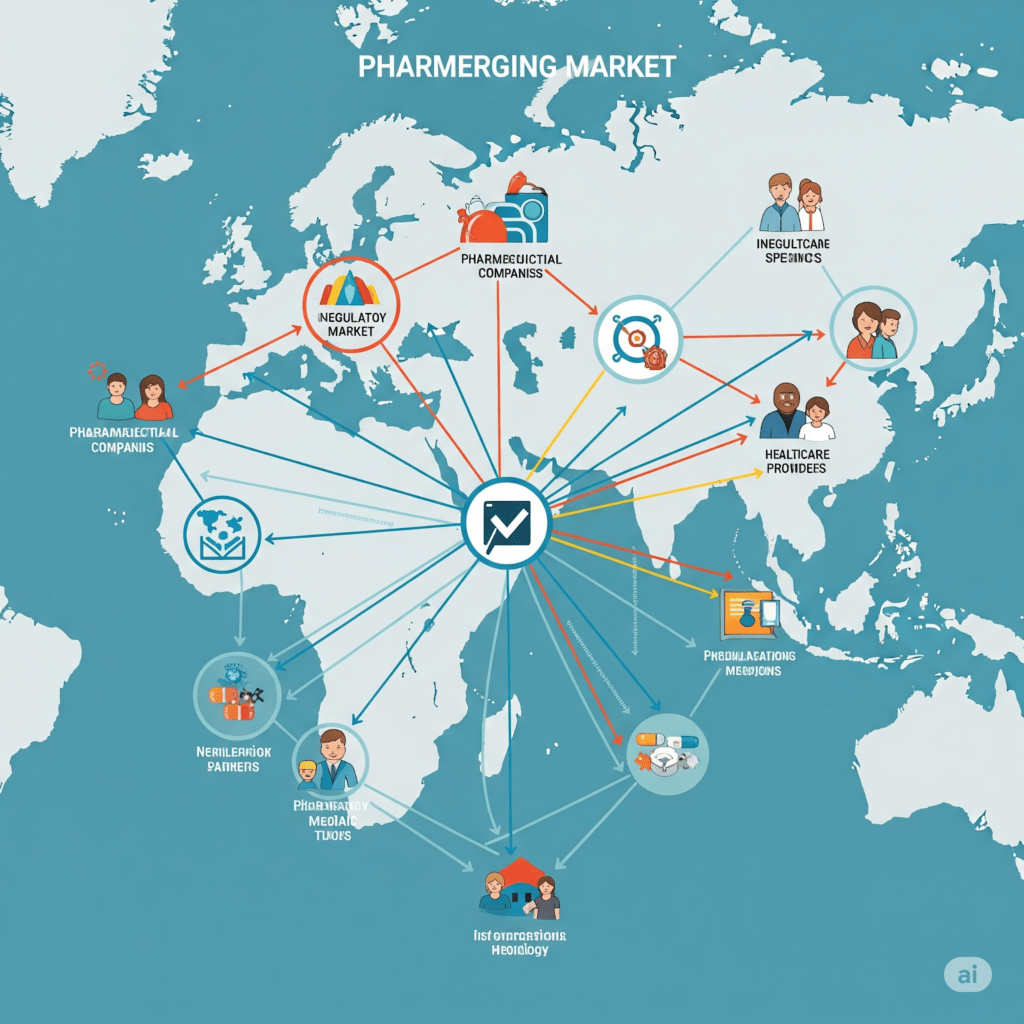
As healthcare priorities shift in developing regions, the global Pharmerging Market is experiencing a powerful wave of growth, fueled by increasing demand for affordable drugs, chronic disease management, digital healthcare tools, and infrastructure modernization. The term “Pharmerging” refers to fast-growing pharmaceutical markets within emerging economies that are transforming the global healthcare landscape.
According to Prophecy Market Insights, the market is segmented by product, economy level, indication, distribution channel, and region—with growth forecasted well into 2030.
What’s Driving the Pharmerging Market Boom?
The rise of Tier 2 and Tier 3 economies with expanding middle classes and improved healthcare access has redefined market dynamics. These countries, which include China, India, Brazil, Indonesia, South Africa, and others, are witnessing exponential demand for:
- Generic medications
- Affordable biosimilars
- Chronic disease management drugs
- Public and private healthcare investments
- E-commerce and retail pharmacy expansion
Governments across Asia, Latin America, and Africa are also increasingly allocating budgets to universal health coverage, domestic drug manufacturing, and digital health integration—contributing to the sector’s long-term trajectory.
For early-access insights into market segmentation and regional performance, request your sample report.
Segmentation Overview: Diverse Product & Economic Landscape
By Product:
- Pharmaceuticals
- Healthcare
- Others (IT & Record Management)
While pharmaceuticals—especially generic drugs and biosimilars—dominate the sector, healthcare infrastructure and digital systems are fast catching up. Investments in telehealth, electronic medical records (EMR), and AI-powered diagnostics are helping improve access and efficiency in underdeveloped regions.
By Economy:
- Tier-1
- Tier-2
- Tier-3
Tier-1 economies, such as China and India, account for a large share due to robust manufacturing ecosystems and policy support. However, Tier-2 and Tier-3 markets (e.g., Indonesia, Nigeria, Vietnam, and Egypt) are expected to witness the fastest CAGR over the forecast period as pharmaceutical infrastructure improves and population health burdens increase.
Disease Focus: Tackling Chronic and Infectious Conditions
By Indication:
- Lifestyle Diseases
- Cancers & Autoimmune Diseases
- Infectious Diseases
Urbanization and sedentary lifestyles in emerging economies are causing a surge in non-communicable diseases (NCDs) like diabetes, hypertension, and cardiovascular ailments. Simultaneously, infectious diseases such as TB, malaria, and HIV/AIDS remain prevalent in lower-income regions, driving dual demand for both acute and chronic care pharmaceuticals.
In oncology, major pharmerging markets are integrating biosimilars and targeted therapies, thanks to support from multinational drugmakers and local biotech startups.
Distribution Channels: Pharmacies Go Digital
By Distribution Channel:
- Hospitals
- Clinics
- Retail Pharmacies
- E-Commerce
- Drug Stores
Retail pharmacies and e-commerce platforms are witnessing massive growth, particularly post-COVID. Online drug delivery apps, teleconsultation services, and AI-powered prescription tracking systems are redefining drug access in rural and remote areas. Hospital and clinic-based channels remain key for specialized treatment and chronic care.
To tailor your insights based on region, indication, or distribution channel, customize your report here.
Regional Outlook: Asia Pacific Dominates, LATAM & Africa Rising
- Asia Pacific leads the pharmerging landscape, powered by China, India, Indonesia, and the Philippines. These nations benefit from local pharmaceutical production capacity, expanding insurance coverage, and supportive government policies.
- Latin America is rising as Brazil, Mexico, and Colombia emphasize healthcare reforms, domestic drug manufacturing, and rural healthcare access.
- Africa, particularly Nigeria, Kenya, and South Africa, represents the next frontier with rapid population growth, mobile health initiatives, and donor-driven drug access programs.
Meanwhile, Eastern Europe is modernizing its generic drug frameworks and investing in biosimilar pipelines to reduce dependency on Western imports.
Top Market Players Leading the Charge
Global pharmaceutical giants are increasingly eyeing pharmerging markets as strategic growth hubs. Their approaches include local manufacturing, M&A with regional players, and price-sensitive innovation.
Key companies include:
- Sanofi S.A.
- Pfizer Inc.
- AstraZeneca Plc
- GlaxoSmithKline Plc
- F. Hoffmann-La Roche AG (Roche AG)
- Eli Lilly and Company
- Johnson & Johnson
- Abbott Laboratories
- Novartis AG
- Teva Pharmaceutical Limited
Many of these firms are establishing R&D centers, joint ventures, and access pricing models specifically for pharmerging economies.
Key Trends Shaping the Future
- Expansion of biosimilar and generic drug portfolios
- Localization of pharma supply chains
- Growth in mobile health apps and digital pharmacies
- Increase in public-private partnerships for healthcare delivery
- Entry of health-tech startups in diagnostics, chronic care, and EMR systems
Conclusion
The Pharmerging Market is no longer a peripheral force—it’s now central to the growth strategy of the global pharmaceutical industry. As emerging markets enhance healthcare infrastructure and prioritize population health, opportunities will continue to unfold across pharmaceuticals, health IT, and therapeutic innovation.
The macro analyst desk brings highly sought after financial news based on market analysis, insider news and company filings.
